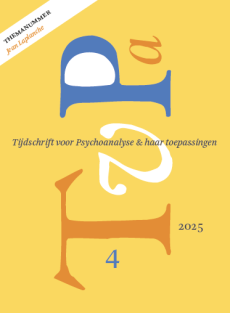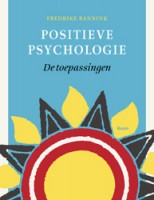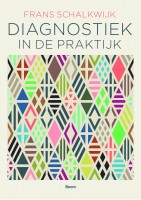Opera, emotie en betekenisgeving
Summary
Opera, emotion and meaning
That an opera evokes emotions goes without saying, but how does it succeed in doing so? First, conditions for being able to enjoy a work of fiction and the longing for music are discussed. Then, in an approach analogous to that of reader response theory, the author seeks to demonstrate that the meaning of an opera is constituted by the countertransference reactions of the listener to the unconscious transferences of the composer, librettist and interpreters into the opera. Two listener responses to a Dutch performance of Puccinis La Bohème serve as clinical vignettes for a research proposal in which individual responses to a specific opera lead to the formulation of its emotional meaning.
Key words:
emotion, listener response theory, music, opera, psychoanalysis
Literatuur
- Baest, A. van (2000). A semiotics of opera. Delft: Eburon.
- Boerwinkel, A.R. & Gomperts, W.J. (red.) (2003). Alleen en met zn tweeën. One- en two person psychologie in de psychoanalyse. Assen: Van Gorcum.
- Brugger, S. (2001). De stompe tanden van de kinderen: betekenissen van het nationaal-socialisme bij kleinkinderen van meelopers en daders. Tijdschrift voor Psychoanalyse, 7, 76-90.
- Citron, M.J. (1993). Gender and the musical canon. Cambridge: University Press.
- Dame, J. (1994). Het zingend lichaam. Kampen: Kok Agora.
- De Block, A. (2002). Culturele instincten. Een alternatief voor de psychodynamica van de sublimering. Tijdschrift voor Psychoanalyse, 8, 222-233.
- Ehrenzweig, A. (1953). The psychoanalysis of artistic vision and hearing. Londen: Routledge & Kegan Paul.
- Gedo, J.E. (1997). On the psychological core of opera. Annual of Psychoanalysis, 25, 49-59.
- Hillenaar, H.J. (2002). De innerlijke identiteit van de schrijver. Tijdschrift voor Psychoanalyse, 8, 157-172.
- Hindle, D. (2000). Lenfant et les sortilèges revisited. International Journal of Psychoanalysis, 81, 1185-1196.
- Holland, N. (1975). Hamlet my greatest creation. Journal of the Academy of Psychoanalysis, 3, 419-427.
- Holland, N. (1998). Reading and identity. Artikel gepubliceerd op zijn website.
- Kris, E. (1952). Psychoanalytic explorations in art. New York: International Universities Press.
- Levarie, S. (1984). Opera and the human emotions. Annual of Psychoanalysis, 12, 415-420. Lindenberger, H. (1984). Opera. The extravagant art. New York: Cornell University Press.
- Löchel, E. (1997). Inszenierungen einer Technik. Psychodynamik und Geslechterdifferenz in der Beziehung zum Computer. Frankfurt: Campus.
- Lorenzer, A. (1986). Tiefenhermeneutischen Kulturanalyse. In A. Lorenzer (red.), Kulturanalysen. Psychoanalytische Studien zur Kultur (p. 11-98). Frankfurt am Main: Fischer.
- McDonald, M. (1970). Transitional tunes and musical development. Psychoanalytic Study of the Child, 25, 503-520.
- Meltzer, D. & Harris Williams, M. (1988). The apprehension of beauty: the role of aesthetic conflict in development, violence and art. Perthshire: Clunie Press.
- Poizat, M. (1986). Lopéra, ou le Cri dange: Essai sur la jouissance de lamateur dopéra. Parijs: A.A. Métailié.
- Schalkwijk, F. (1984). Grondslagen van muziektherapie. Assen: Dekker & V.d. Vegt/Van Gorcum.
- Schalkwijk, F. (1997). Psychoanalyse en emotie: een aanzet tot discussie. Tijdschrift voor Psychoanalyse 3, 68-85.
- Schönau, W. & Pfeiffer, J. (2003). Einführung in die psychoanalytische Literaturwissenschaft. Stuttgart: Verlag J.B. Meltzer (2e druk).
- Spel, M. (2003). Recensie van de opera La Bohème. NRC Handelsblad, 4 november 2003.
- Tan, E. (1991). Film als emotiemachine. De affect-structuur van de traditionele speelfilm. Academisch proefschrift Universiteit van Amsterdam.
- Tomkins, S.S. (1962). Affect, imagery, consciousness Vol. I & II. New York: Springer.
- Van Reeth, C. (2003). Over de zangstem en emotie in de opera. Lezing op het symposium Opera van de Stichting Psychoanalyse en Cultuur in Amsterdam, 15 november 2003.
- Verbruggen, G. (2003). Moderne opvattingen over dromen. Tijdschrift voor Psychoanalyse, 9, 4-16.
- Weissman, P. (1967). Theoretical considerations of ego regression and ego functions in creativity. Psychoanalytic Quarterly, 36, 37-50.
 © 2009-2025 Uitgeverij Boom Amsterdam
© 2009-2025 Uitgeverij Boom Amsterdam
ISSN 1382-516x
De artikelen uit de (online)tijdschriften van Uitgeverij Boom zijn auteursrechtelijk beschermd. U kunt er natuurlijk uit citeren (voorzien van een bronvermelding) maar voor reproductie in welke vorm dan ook moet toestemming aan de uitgever worden gevraagd:
Behoudens de in of krachtens de Auteurswet van 1912 gestelde uitzonderingen mag niets uit deze uitgave worden verveelvoudigd, opgeslagen in een geautomatiseerd gegevensbestand, of openbaar gemaakt, in enige vorm of op enige wijze, hetzij elektronisch, mechanisch door fotokopieën, opnamen of enig andere manier, zonder voorafgaande schriftelijke toestemming van de uitgever.
Voor zover het maken van kopieën uit deze uitgave is toegestaan op grond van artikelen 16h t/m 16m Auteurswet 1912 jo. Besluit van 27 november 2002, Stb 575, dient men de daarvoor wettelijk verschuldigde vergoeding te voldoen aan de Stichting Reprorecht te Hoofddorp (postbus 3060, 2130 KB, www.reprorecht.nl) of contact op te nemen met de uitgever voor het treffen van een rechtstreekse regeling in de zin van art. 16l, vijfde lid, Auteurswet 1912.
Voor het overnemen van gedeelte(n) uit deze uitgave in bloemlezingen, readers en andere compilatiewerken (artikel 16, Auteurswet 1912) kan men zich wenden tot de Stichting PRO (Stichting Publicatie- en Reproductierechten, postbus 3060, 2130 KB Hoofddorp, www.cedar.nl/pro).
No part of this book may be reproduced in any way whatsoever without the written permission of the publisher.
Nieuwsbrief Boom Psychologie
Meld u nu aan en ontvang maandelijks de Boom Psychologie nieuwsbrief met aantrekkelijke aanbiedingen en de nieuwe uitgaven.
Aanmelden


